8 Groceries You're Paying Way Too Much For Right Now
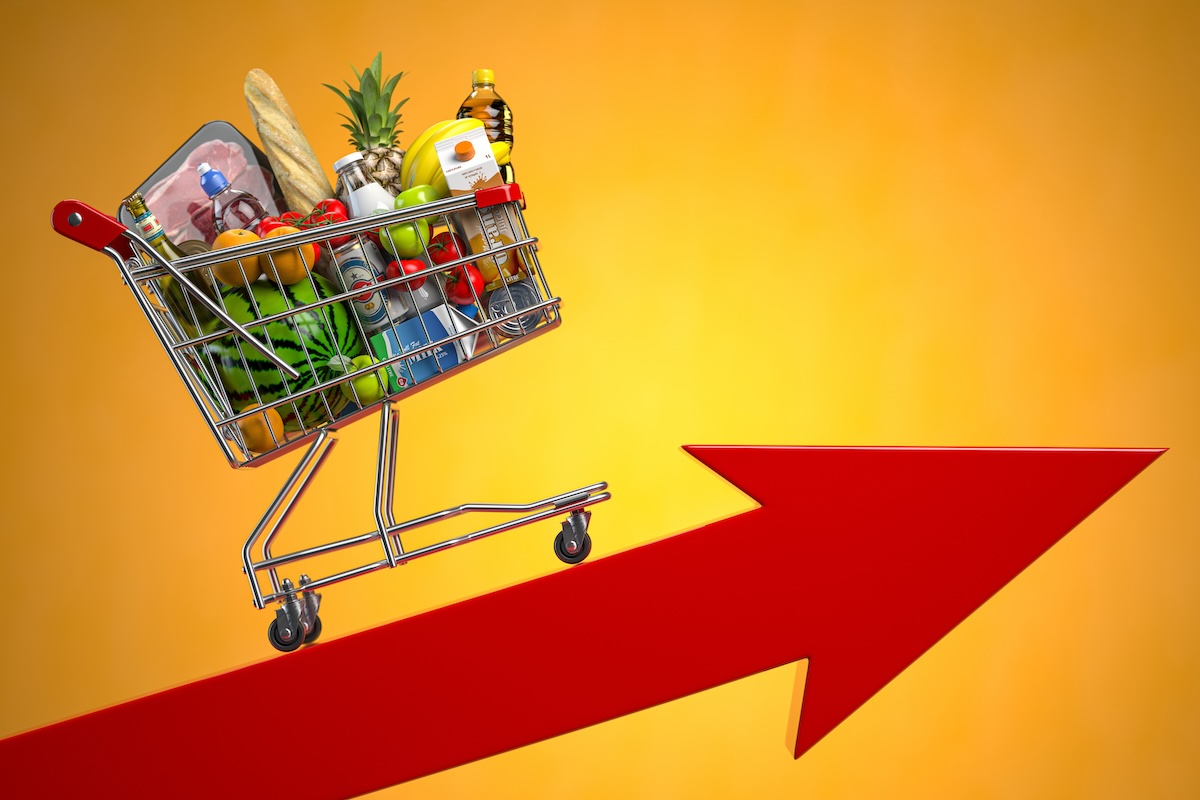
Grocery prices are high. It's no secret. Since the early days of COVID when toilet paper and baby formula became hot commodities, prices have shot up and not looked back. This unsavory shift in the grocery market can be attributed to many different factors including war, weather, diseases among plants and animals, labor shortages, and rising energy costs. Compounded one on top of another, it's reached something of a breaking point for U.S. consumers.
Grocery costs have in fact begun to slow down in terms of how fast they are inflating. According to the most recent Consumer Price Index, the cost of food at home remained unchanged from January to February 2025 and year over year, it has increased just 1.9%. But, this doesn't offer our wallets much in the way of relief. Slower growth doesn't equate to lower costs, and the average monthly grocery bill still stood at 30% higher in 2024 compared to what it was in 2019, a difference of $386.92 to now $504 per month.
Price hikes can be seen all across the board, but there are a few specific food categories which continue to elicit major sticker shock. In this article, we're highlighting 8 grocery items that consumers say are significantly overpriced right now. And, keep in mind, these are all pre-tariff concerns. The new taxes on imported goods put in place by the Trump Administration could exacerbate many of these pre-exisitng price issues.
Eggs
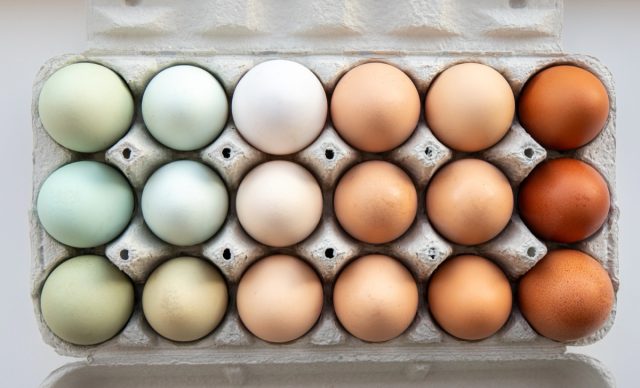
Consumers' heads are still scrambled over the price of eggs. Costs have been on the rise for months, thanks largely to the Avian flu, which has killed millions of egg-laying birds over the past several years. This all came to a culmination in February when prices hit record highs, reporting at nearly 60% higher than what shoppers faced last year in 2024, according to the Consumer Price Index.
There has been some recent relief. On Reddit, consumers began to notice a slowdown in price surges during March, and data from the USDA confirms that national egg prices fell to a more manageable $3 per dozen at the end of the month. With a better handle on the spread of the flu and lower overall demand in light of unprecedented prices, egg supplies have risen. However, it will take a little longer for all customers to feel these effects and for grocers to return to steady inventories. Some locations may still be implementing purchase limits and Kroger currently has the following statement posted to its website: "Due to recent supply shortages of fresh eggs across the market, we are currently limited in sourcing eggs that meet our strict quality standards."
Cereal
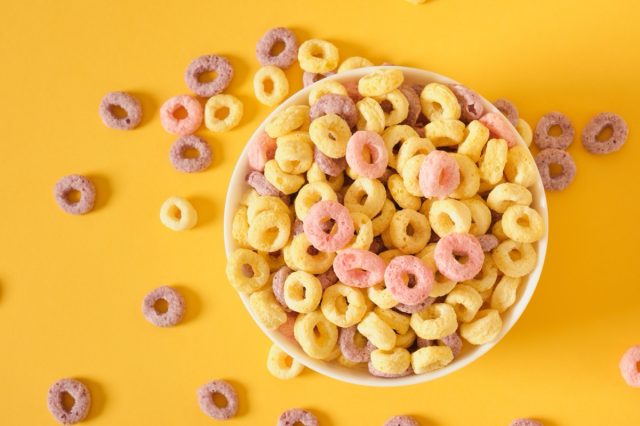
Unless those Lucky Charms really do lead you to a pot of gold, expect your box of cereal to cost you big. Earlier this year, fed up shoppers banded together to discuss the sugar breakfast food's over-the-top prices. "Why is cereal so damn expensive?? Like I'm almost paying almost $7 on one box sometimes!!!" the original post read.
Cereal prices have increased in recent years due to the rising costs of ingredients like sugar, wheat, and grains. The War in Ukraine had a significant impact on the latter two since both Ukraine and Russia are major exporters of both grains and wheat. Cereal prices have actully mellowed out since a peak around 2022. But, customers remain unsatisfied. Others in the thread shared that they were boycotting Kelloggs or cereal in general due to the elevated prices. Another said, "Cereal has always had a huge markup, if there was ever a food item that could eat the cost of inflation and keep prices stable it's cereal. But of course, why would they want to do that?"
Vinegar

One Missouri shopper recently took to Reddit to share a side-by-side comparison of their own Walmart grocery bill in 2019 versus now in 2025. Increases (and large ones at that) were seen across the majority of categories. But, one of the largest upticks–after eggs, of course–was seen in the category of vinegar. The consumer tracked a 155% increase in the cost of vinegar over the past 6 years, and another user in the comments backed up these findings. "The thing I can't get over has been the price of vinegar," they said. "It was always around 60¢ a gallon. Now it's near $5 and hasn't gone down."
Another thread reveals that the price of white vinegar has been going up for years now. And specialty picks like apple cider vinegar and balsamic vinegar come at an even higher cost.
Chocolate

Chocolate has been more bitter than sweet lately as costs continue to rise. Over the last several years, confectioners have been battling a global cocoa shortage primarily due to weather extremes and crop disease. Both have hit West Africa hard–an area which accounts for a large portion of the world's cocoa supply–and sent cocoa prices soaring. Candymakers are now paying much more for the supplies they need and are transferring those costs to consumers.
Major chocolate producers like Hershey's, Lindt, and Mondelez have all raised their prices, and more hikes could be on the horizon. Shoppers have certainly taken notice, and one sweets lover on Reddit admitted to skipping out on their favorite treat, a Cadbury Caramilk Block, because they refused to pay its steep cost of $7. All this is additionally bad news for chocolate bunnies, Reese's eggs, and other treats related to the upcoming Easter holiday.
Beef
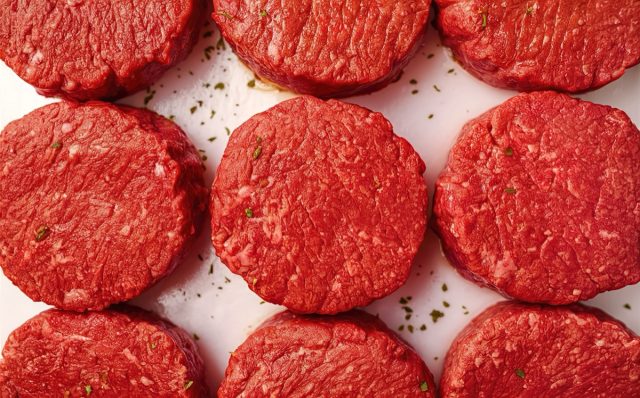
Consumers have beef with the current cost of meat at the grocery store–and for good reason. According to the Bureau of Labor Statistics, the cost of ground beef was reported at $5.63 per pound in February 2025, an increase of 50% compared to the same time in 2019. USDA Choice sirloin steaks have also jumped up by 39%, currently sitting at $12 per pound.
Drought across the U.S., high feed costs, and other challenges have plagued cattle farmers over the past several years, and shoppers are feeling the effects. On Reddit, one user shared, "Beef has gone up from $6.50 a pound to $8.25 in the last week. Why is everything going up soo high? I have to start eating vegan at this point." Another added, "Steak at the grocery store here was $24-$26 dollars yesterday. Insane."
Avocados
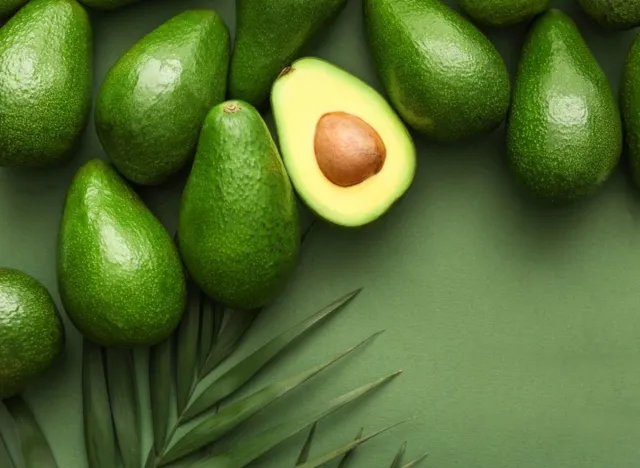
Avocados have always been something of a high-end produce item. They are notorious for their higher price tags due to the significant amount of water used in their cultivation, seasonal fluctuation, high demand, and perishability. But, right now customers say they are excessively expensive, even before the tariffs on Mexico–one of the country's top avocado suppliers–go into full effect.
"The tariffs were postponed, so why are avocados still $9+ up from $6.99?" one Reddit user asked earlier this year after catching sight of prices for a 6-count bag at their local Costco. Others noted even higher costs in the comments, with some reporting prices as high as $11 to $12 in areas like San Diego.
Orange Juice

If you've noticed that your daily dose of vitamin C is costing a bit more these days, you're not alone. In February, one Redditor even caught sight of an orange juice gallon from Safeway's Signature Select brand priced at a whopping $10.99. Over at Walmart, a Great Value gallon is currently sitting at a more reasonable $7.42. However, the same amount of Tropicana is priced much higher at $10.46.
OJ prices have escalated due to a disease called citrus greening and also climate effects. Specifically, severe drought in Brazil and Hurricane Milton in Florida–two major regions for orange production–have heavily impacted this year's yields. Inevitably, most orange byproducts have been affected, but frozen orange juice concentrate has taken the largest hit. According to data from the U.S. Bureau of Labor Statistics, the cost of frozen concentrate has nearly doubled in the last five years to $4.50 per 12-ounce can.
Coffee

If you thought to yourself, "I'll just swap my morning OJ for coffee to save a buck", think again. Coffee prices have additionally been hitting all-time highs in 2025. Among other supply chain disruptions, volatile weather conditions in key coffee-producing countries like Brazil and Vietnam have been detrimental to the world's supply. Wholesale arabica coffee futures have hit levels above $4 per pound this year, according to Trading Economics. And these increases are already being felt by coffee-drinking consumers.
The Consumer Price Index shows that overall food-at-home coffee prices have risen 6% since February 2024, and costs specifically for instant coffee have risen 8.6%. This has translated to an astounding average cost of $7.25 per pound of ground roast coffee–compare that to $4.17 per pound at the start of 2020.









